Related Research Articles

The Federal Aviation Administration (FAA) is the largest transportation agency of the U.S. government and regulates all aspects of civil aviation in the country as well as over surrounding international waters. Its powers include air traffic management, certification of personnel and aircraft, setting standards for airports, and protection of U.S. assets during the launch or re-entry of commercial space vehicles. Powers over neighboring international waters were delegated to the FAA by authority of the International Civil Aviation Organization.
The Federal Aviation Regulations (FARs) are rules prescribed by the Federal Aviation Administration (FAA) governing all aviation activities in the United States. The FARs are part of Title 14 of the Code of Federal Regulations (CFR). A wide variety of activities are regulated, such as aircraft design and maintenance, typical airline flights, pilot training activities, hot-air ballooning, lighter-than-air aircraft, man-made structure heights, obstruction lighting and marking, model rocket launches, model aircraft operations, Unmanned Aircraft Systems (UAS) and kite flying. The rules are designed to promote safe aviation, protecting pilots, flight attendants, passengers and the general public from unnecessary risk.
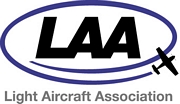
The Light Aircraft Association (LAA) is the representative body in the United Kingdom for amateur aircraft construction, and recreational and sport flying. It oversees the construction and maintenance of homebuilt aircraft, under an approval from the UK Civil Aviation Authority (CAA).
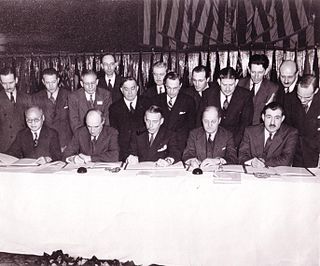
The Convention on International Civil Aviation, also known as the Chicago Convention, established the International Civil Aviation Organization (ICAO), a specialized agency of the UN charged with coordinating international air travel. The Convention establishes rules of airspace, aircraft registration and safety, security, and sustainability, and details the rights of the signatories in relation to air travel. The Convention also contains provisions pertaining to taxation.

A type certificate signifies the airworthiness of a particular category of aircraft, according to its manufacturing design. It confirms that the aircraft of a new type intended for serial production, is in compliance with applicable airworthiness requirements established by the national air law.
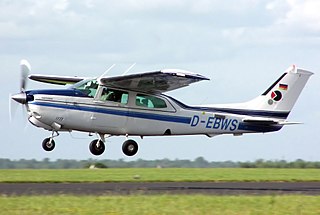
The Cessna 210 Centurion is a six-seat, high-performance, retractable-gear, single-engined, high-wing general-aviation aircraft. First flown in January 1957, it was produced by Cessna until 1986.
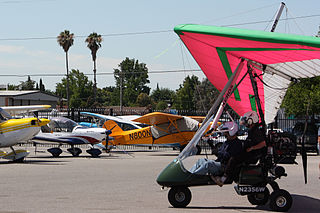
A light-sport aircraft (LSA), or light sport aircraft, is a fairly new category of small, lightweight aircraft that are simple to fly. LSAs tend to be heavier and more sophisticated than ultralight aircraft, but LSA restrictions on weight and performance separates the category from established GA aircraft. There is no standard worldwide description of an LSA.

Aircraft maintenance checks are periodic inspections that have to be done on all commercial and civil aircraft after a certain amount of time or usage. Military aircraft normally follow specific maintenance programmes which may, or may not, be similar to those of commercial and civil operators.
An aircraft part is an article or component approved for installation on a type-certificated aircraft. Approval for these parts is derived from the jurisdictions of the countries that an aircraft is based. In the United States, the Federal Aviation Administration oversees the approval for these parts under Federal Aviation Regulation Part 21.
Parts Manufacturer Approval (PMA) is an approval granted by the United States Federal Aviation Administration (FAA) to a manufacturer of aircraft parts.

In aviation, airworthiness is the measure of an aircraft's suitability for safe flight. Initial airworthiness is demonstrated by a certificate of airworthiness issued by the civil aviation authority in the state in which the aircraft is registered, and continuing airworthiness is achieved by performing the required maintenance actions.
In the United States, a Designated Pilot Examiner (DPE) is a senior pilot who examines applicants for a Pilot Certificate on behalf of the Federal Aviation Administration (FAA). The DPE must check applicants’ qualifications, conduct an oral test of their mental skills and judgment, and perform a practical test in flight. DPE's sometimes double as FAA Aviation Safety Inspectors.
The Modification and Replacement Parts Association is the Washington, D.C.-based trade association that represents manufacturers of government-approved after market aircraft parts. These aircraft parts are often known as PMA parts, from the acronym for Parts Manufacturer Approval. The manufacture of PMA parts is regulated in the United States by the Federal Aviation Administration.

The Directorate General of Civil Aviation (DGCA) is a statutory body of the Indian Central Government to regulate civil aviation in India. Formed under the Aircraft (Amendment) Bill, 2020, the DGCA investigates aviation accidents and incidents, maintains all regulations related to aviation and is responsible for issuance of licenses pertaining to aviation like PPL's, SPL's and CPL's in India. It is headquartered along Sri Aurobindo Marg, opposite Safdarjung Airport, in New Delhi. The Government of India is planning to replace the organisation with a Civil Aviation Authority (CAA), modelled on the lines of the American Federal Aviation Administration (FAA).

The Bombardier Global 7500 and Global 8000 are ultra long-range business jets developed by Bombardier Aviation . Announced in October 2010, the program was delayed by two years by a wing redesign. The 7500, originally named the 7000, made its first flight on November 4, 2016, was type certified by Transport Canada on September 28, 2018, and entered service on 20 December 2018. The Global 8000 schedule has not yet been determined. Based on the Global 6000 with a new transonic wing, the longer, four-zone cabin 7500 has a range of 7,700 nmi (14,300 km), while the shorter three-zone 8000 was to reach 7,900 nmi (14,600 km).

Southwest Airlines Flight 812 was a Boeing 737-300 passenger jet that on April 1, 2011, suffered rapid depressurization while cruising at 34,000 ft (10,000 m) near Yuma, Arizona, leading to an emergency landing at Yuma International Airport. Two of the 123 people on board suffered minor injuries. The aircraft was operating Southwest Airlines' domestic scheduled service from Phoenix, Arizona, to Sacramento, California.
FAA Order 8130.34C, Airworthiness Certification of Unmanned Aircraft Systems, establishes procedures for issuing either special airworthiness certificates in the experimental category or special flight permits to unmanned aircraft systems (UAS), optionally piloted aircraft (OPA), and aircraft intended to be flown as either a UAS or an OPA.
The Aviation Safety Knowledge Management Environment (ASKME) is a software suite for certifying new aircraft and modified aircraft. It was created for the Federal Aviation Administration (FAA) Aircraft Certification Service (AIR)

FAA Order 8100.8 , Designee Management Handbook, establishes "policy and procedures for the selection, appointment, orientation, training, oversight, renewal tracking, and termination of certain representatives of the Administrator" of the Federal Aviation Administration. In particular, it is a resource for individuals interested in becoming a Designated Engineering Representative (DER).
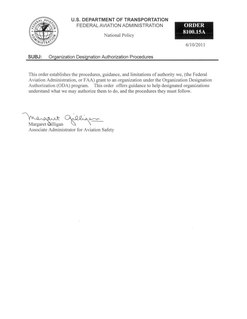
The Organization Designation Authorization (ODA) program is the means by which the FAA grants designee authority to organizations or companies. The regulations addressing the ODA program are found in Title 14 of the Code of Federal Regulations part 183, subpart D, sections 183.41 through 813.67.
References
- ↑ 14 CFR §183.33
- 1 2 3 "Protect an Endangered Species: the FAA Designee; FAA Designee Management Policy is Open For Comment" (PDF). The Update Report. Aviation Suppliers Association. 22 (5). December 23, 2014.
This guidance document provides a wide variety of guidance on how to manage FAA designees and will be phased in incrementally. FAA Notice 8000.372 directs all AIR manufacturing personnel who oversee designees to stop using Order 8100.8 and begin using Order 8000.95 on a schedule. The schedule reflects the implementation of the Designee Management System (DMS) in those offices.
Under that schedule, all MIDOs with designee management responsibilities should have transitioned to Order 8000.95 during the summer (of 2014). 'So Order 8000.95 will have supplanted 8100.8 for [Manufacturing Inspection District Offices] MIDOs (but not necessarily for ACOs and FSDOs). This means that DMIRs and DAR-Fs have transitioned. But DERs should still be under 8100.8 until they are formally transitioned (at which time they will fall under the instructions of 8000.95). [emphasis added] - 1 2 3 "Designees & Delegations: Regulations & Policies". FAA.
8000.95, Designee Management Policy (DMIR, DAR-F)
8100.8D, Designee Management Handbook (DAR-T, DER)
[emphasis added] - ↑ FAA Order 8100.8
- ↑ FAA Order 8130.2